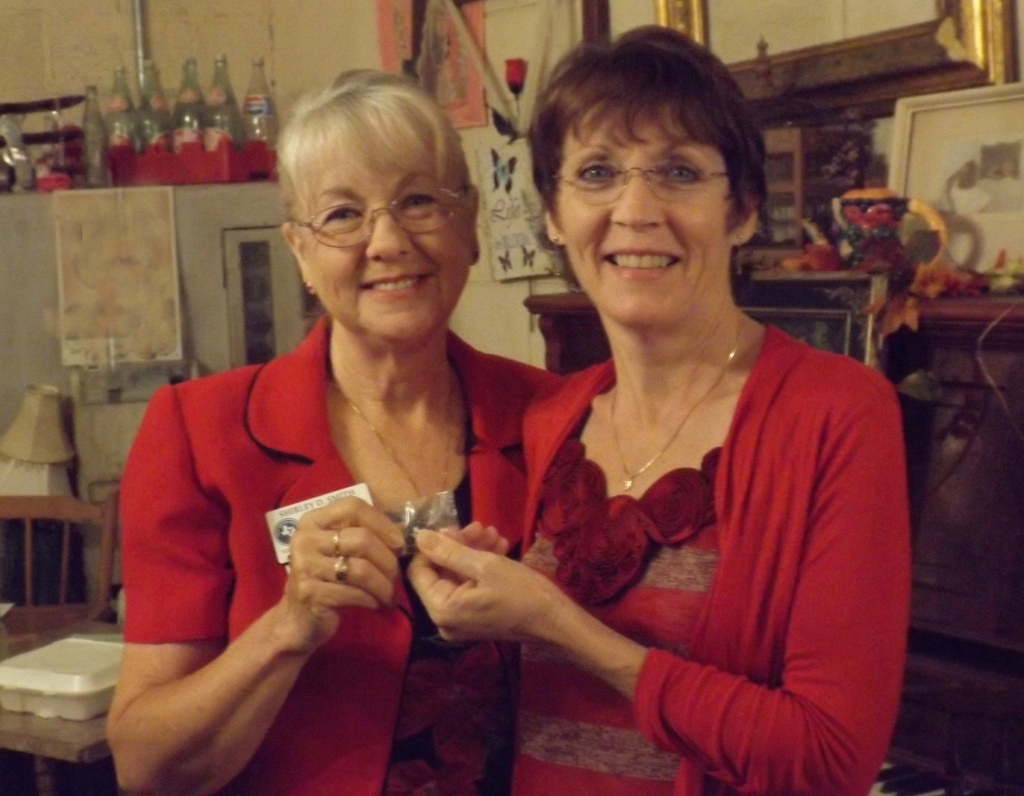Gardening……..ahhh, to dig in the dirt, watch little seedlings sprout and grow into beautiful flowers, plants, vegetables or trees. Nothing can be more satisfying! Is this something that appeals to you? Have you been bitten by the gardening bug and are just not sure where to start? Or, maybe you already garden quite successfully and want to learn more? Maybe you just love to play in the dirt and want more playmates? Whatever the reason, maybe it is time to start thinking about becoming a Somervell County Master Gardener!
Just what is a Master Gardener? Master Gardeners are a dedicated group of ordinary folks who simply have a passion for gardening, desire to further their own knowledge, and wish to further good horticulture practices within our own community. They are volunteers sponsored by the Texas A&M AgriLIFE Extension Service.
 To become a Certified Master Gardener one must complete the training classes and perform additional volunteer hours. By taking the training classes, you will learn not only how to plant things, but also how to keep them healthy. You will also learn to identify and prevent diseases, and how to recognize harmful, as well as beneficial insects. By the end of the class you will have a variety of tools to help problem-solve gardening issues on your own property, as well as to help friends and members of the community. All along the way you will be mentored by a seasoned Master Gardener.
To become a Certified Master Gardener one must complete the training classes and perform additional volunteer hours. By taking the training classes, you will learn not only how to plant things, but also how to keep them healthy. You will also learn to identify and prevent diseases, and how to recognize harmful, as well as beneficial insects. By the end of the class you will have a variety of tools to help problem-solve gardening issues on your own property, as well as to help friends and members of the community. All along the way you will be mentored by a seasoned Master Gardener.
The next tri-county training is scheduled for the spring of 2015. Classes will be held on Tuesdays beginning late March and running through mid-May. Location of classes will be either in Hood, Somervell or Johnson counties.
If interested, please call the Somervell County Extension Office at 254-897-2809 and give Cassie your name and contact information. You will be given priority for the class before it opens to the public. Don’t wait as class size is limited!
 Since I was a small child, I’ve always enjoyed watching plants grow. I come from a long line of farmers and gardeners. So I guess growing things is in my DNA. As a child I used to watch my great-grandmother till and plant her backyard, making it into a wonderland of vegetables, flowers and herbs. Of course, her son, my uncle, had the equipment for tilling, but she did all the grubbing, watering and planting. Thinking about how hard she worked just makes me tired. But I truly believe her garden kept her active even into her 80s at which time she had to give it up.
Since I was a small child, I’ve always enjoyed watching plants grow. I come from a long line of farmers and gardeners. So I guess growing things is in my DNA. As a child I used to watch my great-grandmother till and plant her backyard, making it into a wonderland of vegetables, flowers and herbs. Of course, her son, my uncle, had the equipment for tilling, but she did all the grubbing, watering and planting. Thinking about how hard she worked just makes me tired. But I truly believe her garden kept her active even into her 80s at which time she had to give it up. In the spring of 2007, my husband noticed an article about the next Master Gardeners Training to be held and mentioned it to me in case I might be interested. So I sprang into action and enrolled. How glad I am that I did! The training was interesting and enlightening and as a result I now don’t depend on my trusty “trial and error” method of gardening any more. Best of all, I met some of the most interesting people. People who were interested in gardening, just like me. I might also add that my sister-in-law, who lives in Tennessee, was also enrolled in the master gardeners training in her state. As a result, we have so much in common and so much to share. So the timing for the training was just right and I truly enjoyed all the different lecturers, field trips, and hands-on activities.
In the spring of 2007, my husband noticed an article about the next Master Gardeners Training to be held and mentioned it to me in case I might be interested. So I sprang into action and enrolled. How glad I am that I did! The training was interesting and enlightening and as a result I now don’t depend on my trusty “trial and error” method of gardening any more. Best of all, I met some of the most interesting people. People who were interested in gardening, just like me. I might also add that my sister-in-law, who lives in Tennessee, was also enrolled in the master gardeners training in her state. As a result, we have so much in common and so much to share. So the timing for the training was just right and I truly enjoyed all the different lecturers, field trips, and hands-on activities. Testing for nutrients in the soil may be done through Texas AgriLife Extension Service Soil, Water and Forage Testing Laboratory. You may get an analysis from any lab of your choice but know if you send the soil sample to a commercial laboratory instead of the one at Texas AgriLife Extension Service, be sure to use an agronomic soil testing laboratory, not an environmental soil testing laboratory as most environmental laboratories are unfamiliar with agronomic soil testing and therefore may not make nutrient recommendations. Soil bags for sample collection and information sheets are available from your county extension office or line at
Testing for nutrients in the soil may be done through Texas AgriLife Extension Service Soil, Water and Forage Testing Laboratory. You may get an analysis from any lab of your choice but know if you send the soil sample to a commercial laboratory instead of the one at Texas AgriLife Extension Service, be sure to use an agronomic soil testing laboratory, not an environmental soil testing laboratory as most environmental laboratories are unfamiliar with agronomic soil testing and therefore may not make nutrient recommendations. Soil bags for sample collection and information sheets are available from your county extension office or line at 

 On Saturday, December 6, 2014 Donna Hagar, presented a $5000 check from the Somervell County Master Gardener Association to Dr. Doug Welsh, as a donation for the Texas A&M Gardens and Greenway project. This donation will be combined with funds from other Master Gardener Associations in Texas in an effort to raise $100,000 for the naming rights to a portion of the Texas A&M Gardens and Greenway Project, specifically The Texas Master Gardener Earth-Kind® Garden.
On Saturday, December 6, 2014 Donna Hagar, presented a $5000 check from the Somervell County Master Gardener Association to Dr. Doug Welsh, as a donation for the Texas A&M Gardens and Greenway project. This donation will be combined with funds from other Master Gardener Associations in Texas in an effort to raise $100,000 for the naming rights to a portion of the Texas A&M Gardens and Greenway Project, specifically The Texas Master Gardener Earth-Kind® Garden.
